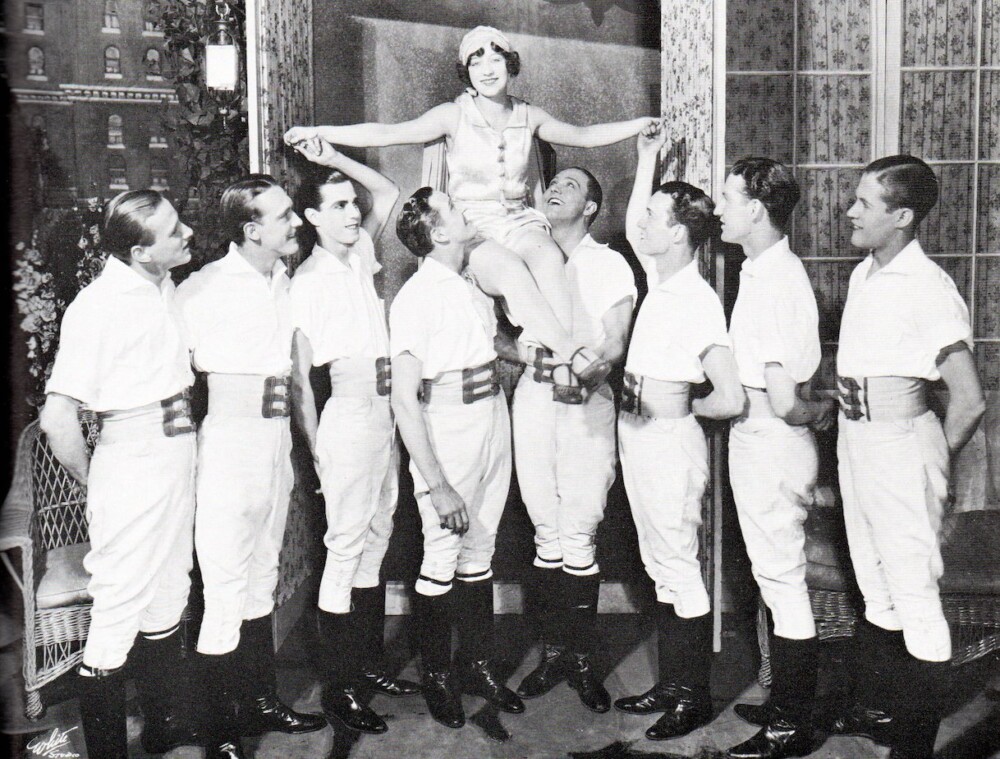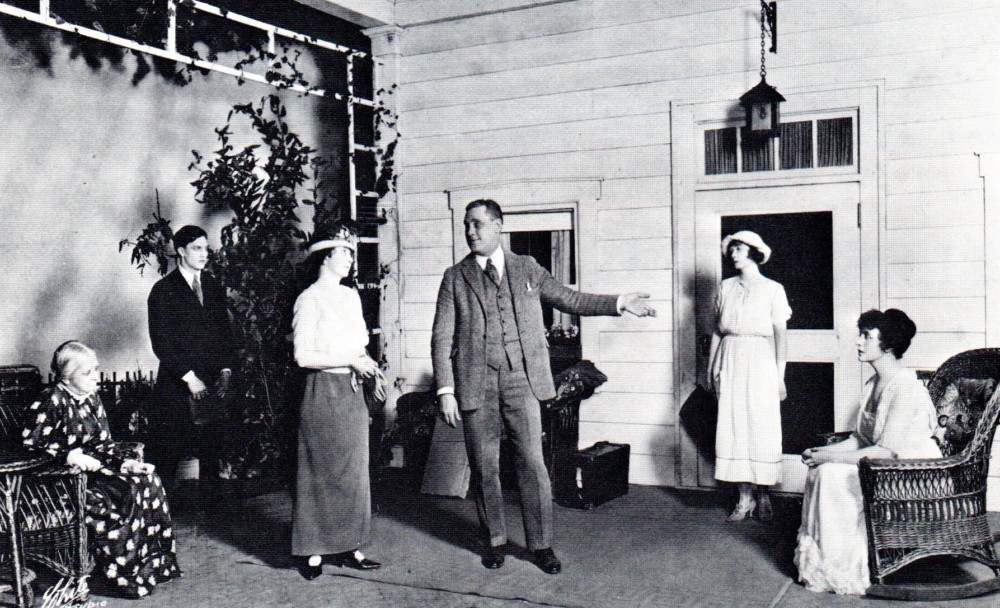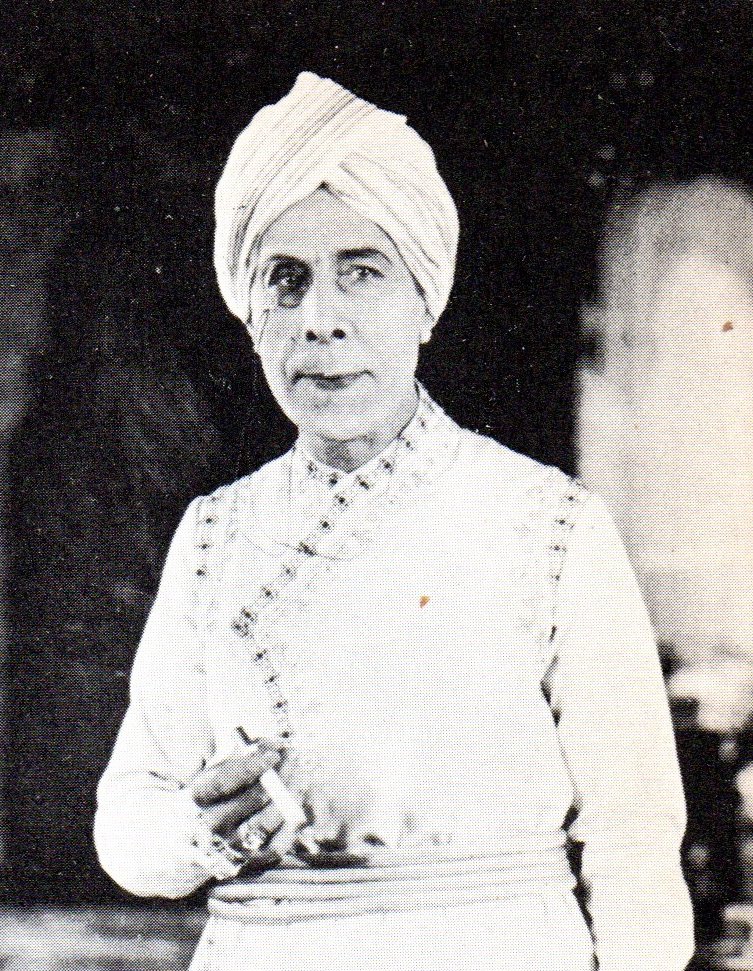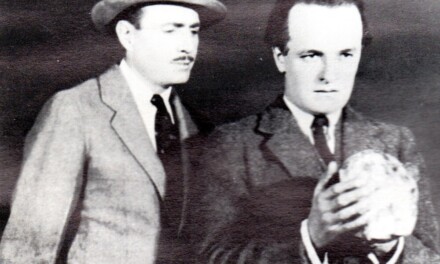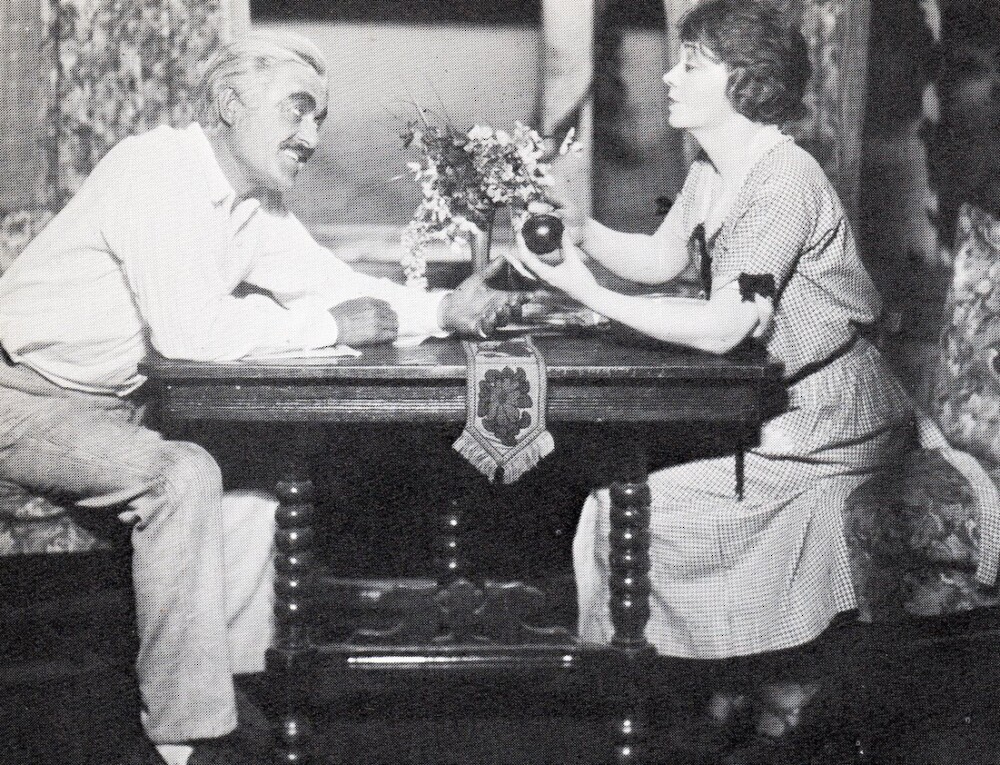By Samuel L. Leiter

As I picked my way through the 1925-1926 season, searching for shows to look back on for this column, I wound up with five, only to realize afterward that the first four appeared seriatim. While only a few new musicals of historical significance appeared during that otherwise abundant season, it is especially remarkable that the four most successful ones opened within less than two weeks of each other, a feat unparalleled in Broadway lore. Those, then, will be the focus of today’s column, with the fifth, The Cocoanuts, momentarily put aside, being more memorable as a topnotch Marx Brothers escapade than a contribution to the legacy of musical theatre.
The four shows are No, No, Nanette (most likely the best known today because of its hit revival in 1971), Dearest Enemy, The Vagabond King, and Sunny. No, No, Nanette became “Yes, Yes, Nanette” to audiences and critics when it opened at the Globe Theatre on September 16, 1925, for a run of 329 performances. According to musical-comedy historian Stanley Green, the show, with its many touring companies and universal popularity, “was probably the biggest international hit of any of the conventional musical comedies of the decade.” It would undoubtedly have run for longer if it hadn’t depleted its audience by its extensive pre-Broadway and concurrent-with-Broadway tours.


Conventional in the extreme, it nevertheless blended the familiar ingredients in a fresh and sparkling way. Its pre-Broadway tryout period was racked with problems, and extensive rewrites of the book (by Otto Harbach and Frank Mandel) and score were required. Among the familiar ingredients added were the two perennials, “I Want to Be Happy” and “Tea for Two,” which enriched the coffers of composer Vincent Youmans and lyricists Irving Caesar and Otto Harbach. Other revisions included the recasting of Louise Groody and Charles Winninger in the leads. Director-producer H.H. Frazee (who replaced Edward Royce), turned the show into an international hit even before it appeared on the Great White Way by allowing not only its various traveling troupes to take it around the country but even a pre-Broadway London production, which opened the previous March. In Chicago it scored a record 665-performance run. After it closed in the Big Apple it sprang up in seventeen productions all over the world and amassed more than $2 million in profits.
Excellent dancing, a continually delightful series of tunes, and bright, continuous comedy turned the show into a memorable occasion. Its unsurprising plot, based on a 1919 farce co-written by one of the librettists, tells of wealthy Bible publisher Billy Early (Wellington Cross), whose penchant for coming to the aid of young damsels in distress lands him in the soup in Atlantic City when he innocently extends his succor to a Boston lass, Betty (Beatrice Lee); a San Francisco girl, Flora (Edna Whistler); and a Washington maiden, Winnie (Mary Lawlor). Billy’s jealous wife, Lucille (Josephine Whittell), suspecting the worst, raises hell, but the canny attorney Jimmy Smith (Winninger) comes to the rescue. Billy’s flapper daughter, Nanette (Groody), is coupled with her boyfriend Tom (Jack Barker), while Lucille sends the ladies on their way and puts her overgenerous husband in his rightful place.


Only two days later, the critics were clapping their hands sore at Dearest Enemy, with its book by Herbert Fields, music by Richard Rodgers, lyrics by Lorenz Hart, and direction by John Murray Anderson. The first Broadway collaboration of Rodgers and Hart, this show that the Times called “an operetta with more than a chance flavor of Gilbert and Sullivan,” opened at the Knickerbocker Theatre on September 18, 1925, and ran for 286 performances. The critics were charmed by its elegant period settings (Clark Robinson), the novel background of its book, and the excellent melodies and words. Helen Ford, one of Broadway’s most popular stars of the day, outdid herself as the appealing ingénue.
Dearest Enemy was based on an actual historical incident, the occasion when Mrs. Robert Murray (Flavia Arcaro) entertained with food and wine the chiefs of staff of the British forces one night during the Revolutionary War. This act gave General Putnam (Percy Woodley) and his 3,000 Continentals the opportunity to move unhindered from the Battery to Harlem Heights, where they joined General Washington (H.H. Eldridge).
The idea for the show came to Rodgers and Hart when they chanced upon a plaque on a Thirty-seventh Street building commemorating the event. Attendant upon the historical incidents were the usual romantic and comic interludes typical to the genre.
Herbert Fields’s book was superior to most of the day, but there was some carping over his recourse to sexual innuendo. Hart’s witty words were also a bit risqué. Arthur Hornblow remarked, “The score is really delightful, combining as it does refinement and genuinely sustained melody throughout. Richard Rodgers . . . is one of the coming lights of his particular field.” Numbers appreciated included two that became standards, “Here in My Arms” and “Bye and Bye.”
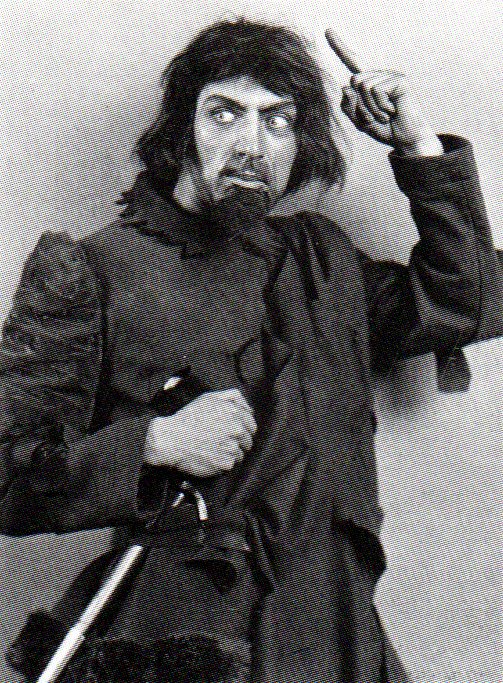

Only three days after Dearest Enemy and less than a week after No! No! Nanette there wandered on Broadway yet another hit musical, The Vagabond King, which was enthroned at the Casino Theatre on September 21, 1925, ruling there for 511 showings. Rudolf Friml’s superb operetta, based on Justin Huntly McCarthy’s If I Were King, a popular costume drama of 1901, featured as its leading character the fifteenth-century French vagabond-poet Francis Villon (Dennis King). Friml’s music (with lyrics by Brian Hooker ad W.H. Post) was lush, and audiences savored such numbers as “The Song of the Vagabonds,” “One a Rose,” “Love Me Tonight,” “Some Day,” “Waltz Huguette,” and “Love for Sale” (not to be confused with Cole Porter’s still popular song of this title).
The exciting story of Villon’s swashbuckling adventures after King Louis XI (Max Figman, who codirected with Moscow Art Theatre veteran Richard Boleslavsky) makes him king for a day on condition he succeed in making love to Katherine de Vaucelles (Carolyn Thomson) was perfect operetta material. The production was lavishly presented with lovely sets and costumes (both by James Reynolds). Its score, wrote Arthur Hornblow, was “marked by a fine melodic invention and some considerable musical distinction.”
The title role established Englishman Dennis King as the leading musical leading man of the decade. He starred as well in the 1930 film version, opposite Jeanette MacDonald, available here. Six of the original songs remained, the rest being newly composed by other artists. The 1956 movie, starring Maltese singer Oreste Kirkop and Hollywood musical queen Kathryn Grayson, is also available on YouTube. Aficionados will want to see this because Rita Moreno, who was already twenty-five in 1956, plays Huguette. Talk about artistic longevity!


On that bright note, we conclude with the last in this remarkable string of back-back-to-back hits, Sunny, which shone at the New Amsterdam Theatre from September 22 for 517 performances. Otto Harbach and Oscar Hammerstein II wrote the book and lyrics, Jerome Kern composed the music, Hassard Short directed, Julian Mitchell and David Bennett staged the dances, and the busy James Reynolds did the designs.
This big musical hit was the first collaboration of Kern and Hammerstein, soon to be immortalized with Show Boat. Hammerstein and Harbach hammered out a sketchy story designed to allow a cast of specialty artists each to do their thing, with all tied together by a flimsy ribbon of unity. At the head of the list was the indomitable dancer-singer Marilyn Miller. Extravagant and numerous sets and costumes were the product of Reynolds’s brilliant imagination, and an unusually effective Kern score topped the concoction.


The title role (Miller) is a bareback rider in a circus. This allows a scene of circus performance and parading to be introduced, with all the requisite elements of freaks, barkers, band, and performers making a splashy display. The plot wends its way through the revue-like show, presenting the tale of Sunny’s love for Tom (Paul Frawley), an American soldier she meets in Europe, her choice to not remarry her ex-husband, the circus owner (Joseph Cawthorne), as a means of returning to the States on Tom’s ship; her stowing away; her marriage on the luxurious liner to Tom’s friend (Jack Donahue) as a ploy to avoid arrest when she is caught; and her eventual union with the man she loves.


No one was disappointed at Miller’s wares, but the book was weak-kneed and unfunny. Kern’s score contained the always-listenable hit, “Who,” as well as other eventual standards, like “D’Ya Love Me?” and “Sunny.” The talented company included Cliff Edwards (“Ukulele Ike”), Mary Hay, and Clifton Webb. Two movies versions appeared. A clip from the 1930 one, with Miller repeating her performance, can be seen here. And here she is, singing “Who.” The second, made in 1941, starred Anna Neagle, John Carroll, and Ray Bolger. Here’s the full movie.
These four shows represented a grand slam such as Broadway had never known nor would likely ever know again. The next time “Leiter Looks Back” does so, it will be at selected revues of 1924-1925. I’m looking forward to it.


